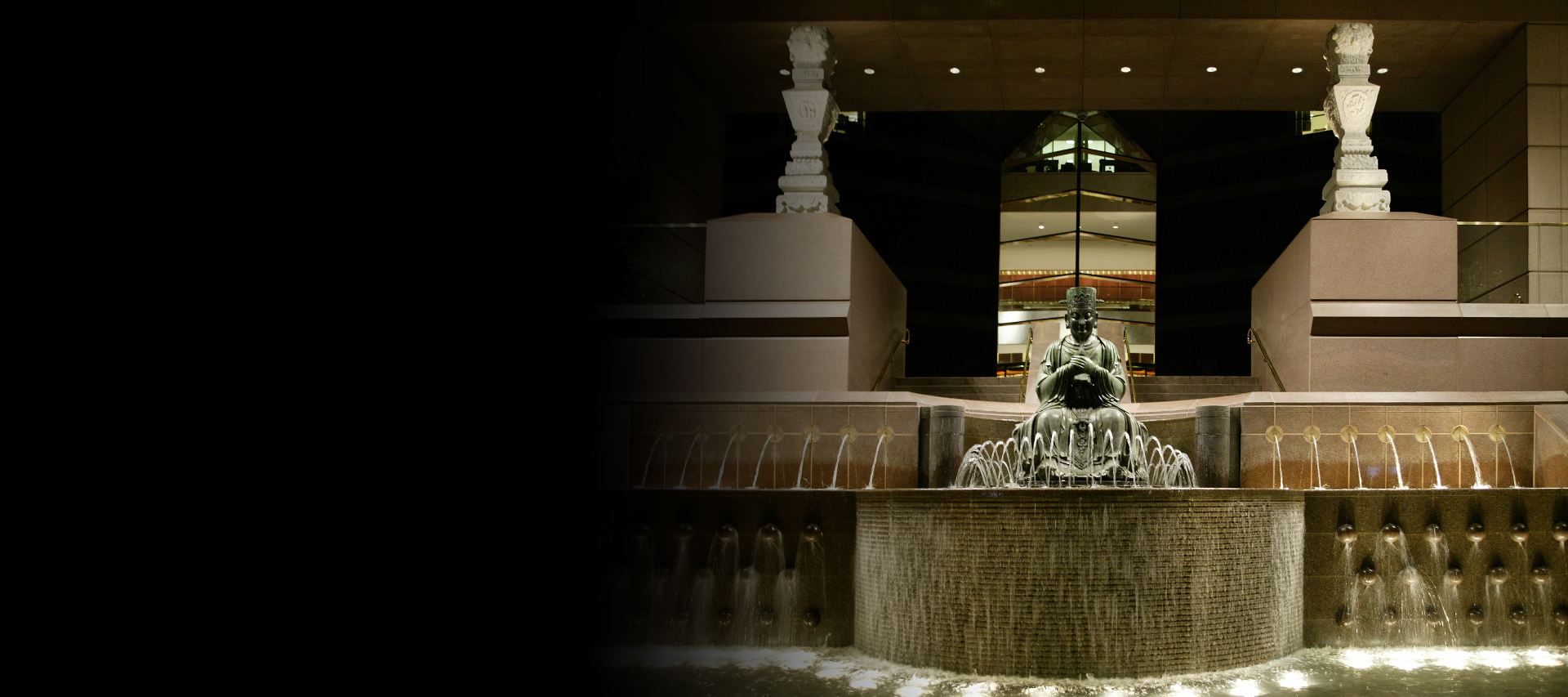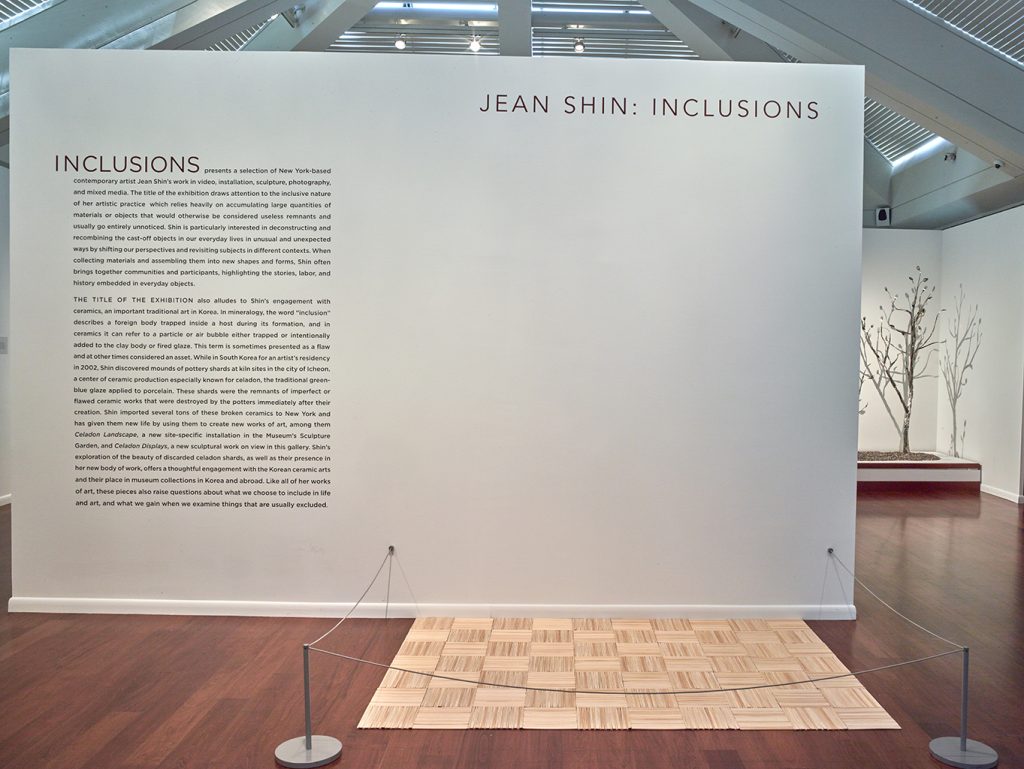
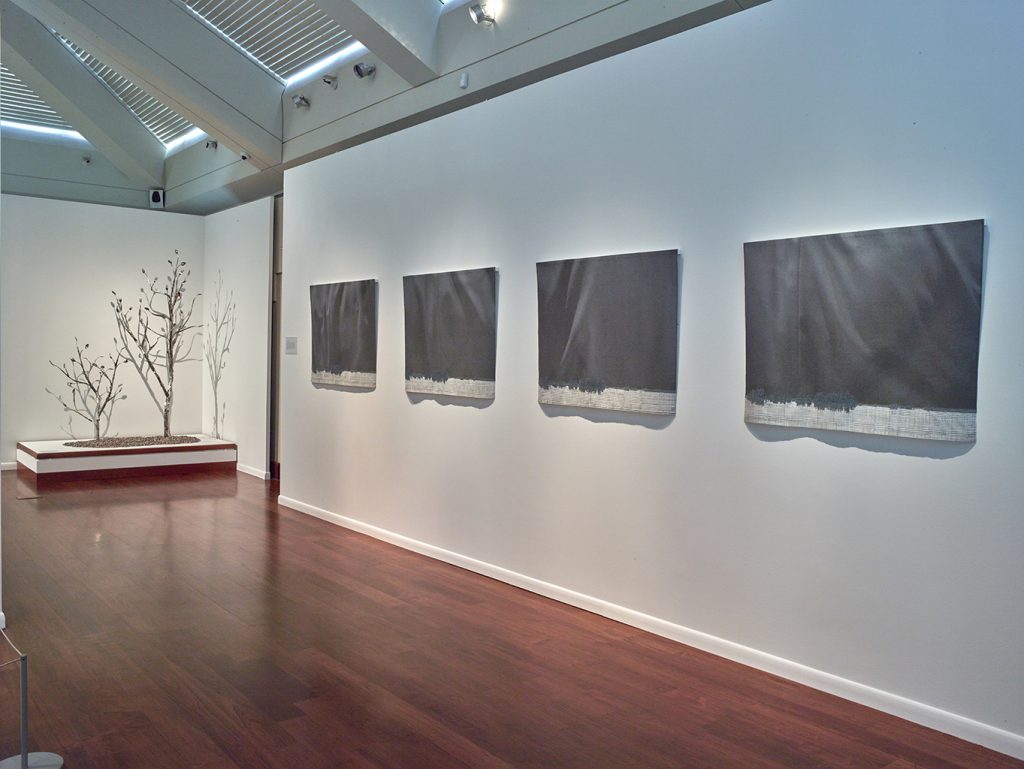
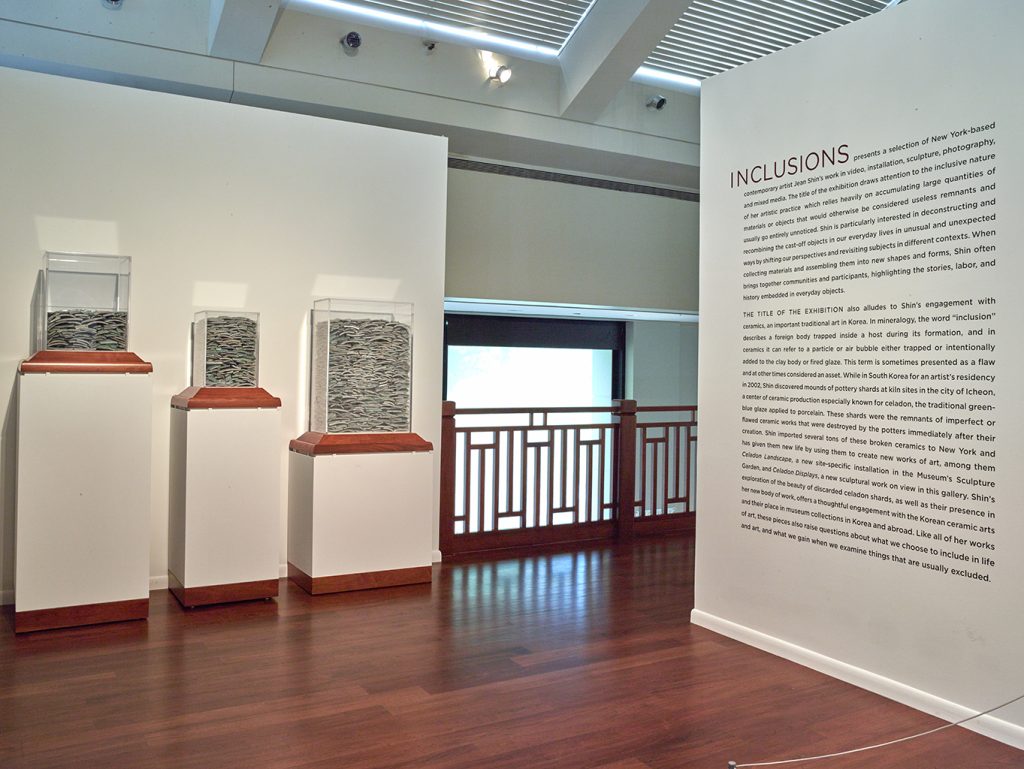
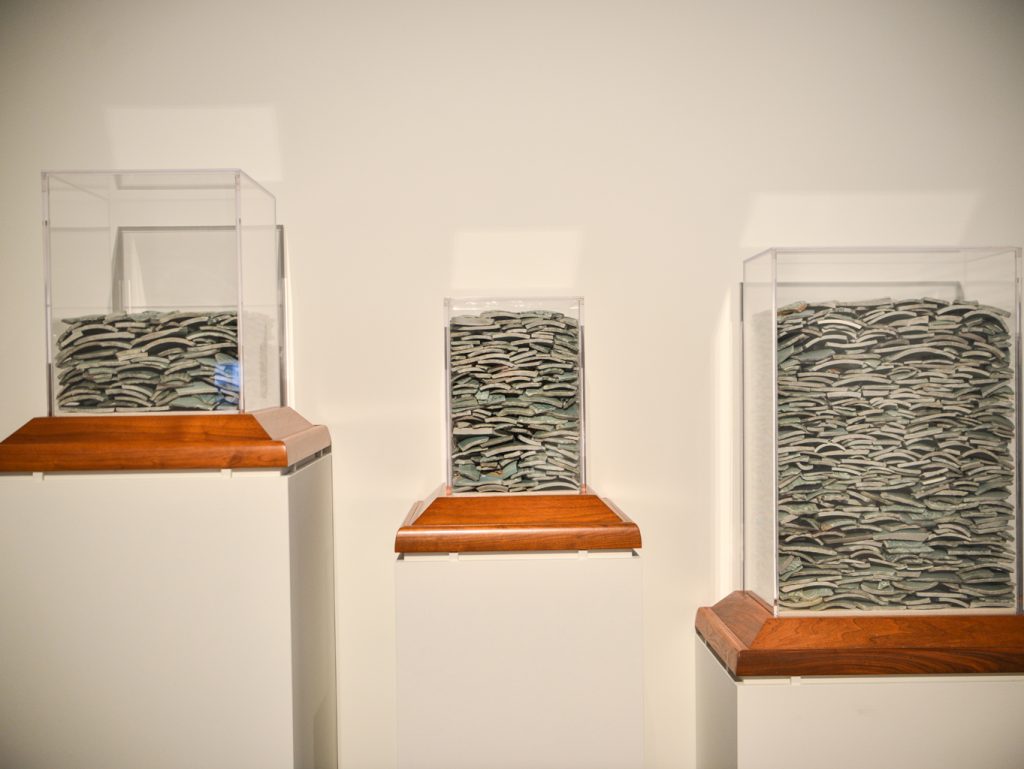
Artist: Jean Shin (b. 1971, Seoul, Korea; lives and works in Brooklyn, NY)
Period: 2015
Medium: Ceramic shards, museum pedestals
Collection Title: Courtesy of the artist and Cristin Tierney Gallery, New York
Ceramic discards donated by the city of Icheon

Artist: Jean Shin (b. 1971, Seoul, Korea; lives and works in Brooklyn, NY)
Period: 2015
Medium: Ceramic shards, museum pedestals
Collection Title: Courtesy of the artist and Cristin Tierney Gallery, New York
Ceramic discards donated by the city of Icheon
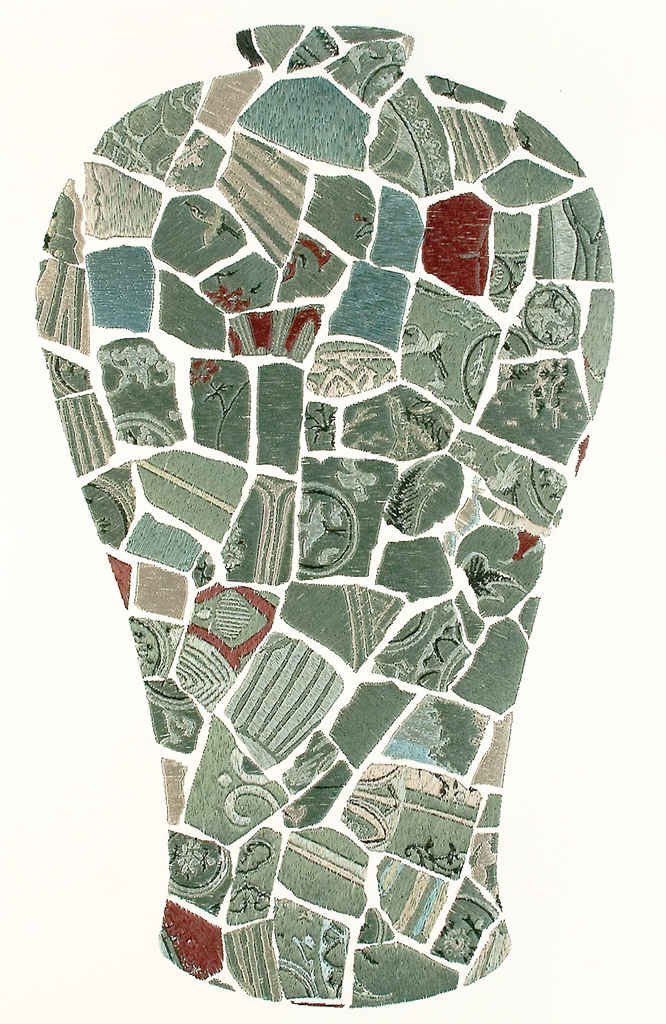
Jean Shin (b. 1971, Seoul, Korea; lives and works in Brooklyn, NY)
2008
Digital embroidery and stitching, inkjet print on Arches Paper
Courtesy of the artist; SOLO Impression, New York; and Cristin Tierney Gallery, New York
Jean Shin: Inclusions presents a selection of Shin’s work in video, installation, photography, and mixed media. The title of the exhibition draws attention to the inclusive nature of her artistic practice, which relies heavily on accumulating large quantities of material or objects that would otherwise be considered humble remnants, useless cast-offs, or unnoticed entirely. When collecting these materials and giving them new shape and form, Shin also convenes communities and participants, drawing attention to the stories, labor, and history embedded in everyday objects.
Her video work Penumbra (2003) relates to a site specific sculptural installation of the same name at the Socrates Sculpture Park in New York, comprised of the fabric stripped from discarded, broken umbrellas gathered from city streets after rainstorms. The umbrella “skins” are reconfigured into a large canopy-like assemblage installed among the sculpture garden’s trees, slightly reminiscent of the fabric remnants reassembled with care in the traditional Korean art of jogakbo, patchwork wrapping cloths.
In mineralogy, an inclusion describes a foreign body trapped inside a host during its formation, and in ceramics it can refer to a particle or air bubble trapped in a fired glaze. It is an ambivalent term, sometimes presented as a flaw while at other times considered an asset.
The title of the exhibition also alludes to Shin’s engagement with discarded ceramic shards in Celadon Landscape (2015). In mineralogy, an inclusion describes a foreign body trapped inside a host during its formation, and in ceramics it can refer to a particle or air bubble trapped in a fired glaze. It is an ambivalent term, sometimes presented as a flaw while at other times considered an asset. Shin’s exploration of the beauty of discarded celadon shards, and their presence in her new body of work offer a thoughtful engagement with Korean ceramic arts and their inclusion in art museum collections in Korea and abroad.
